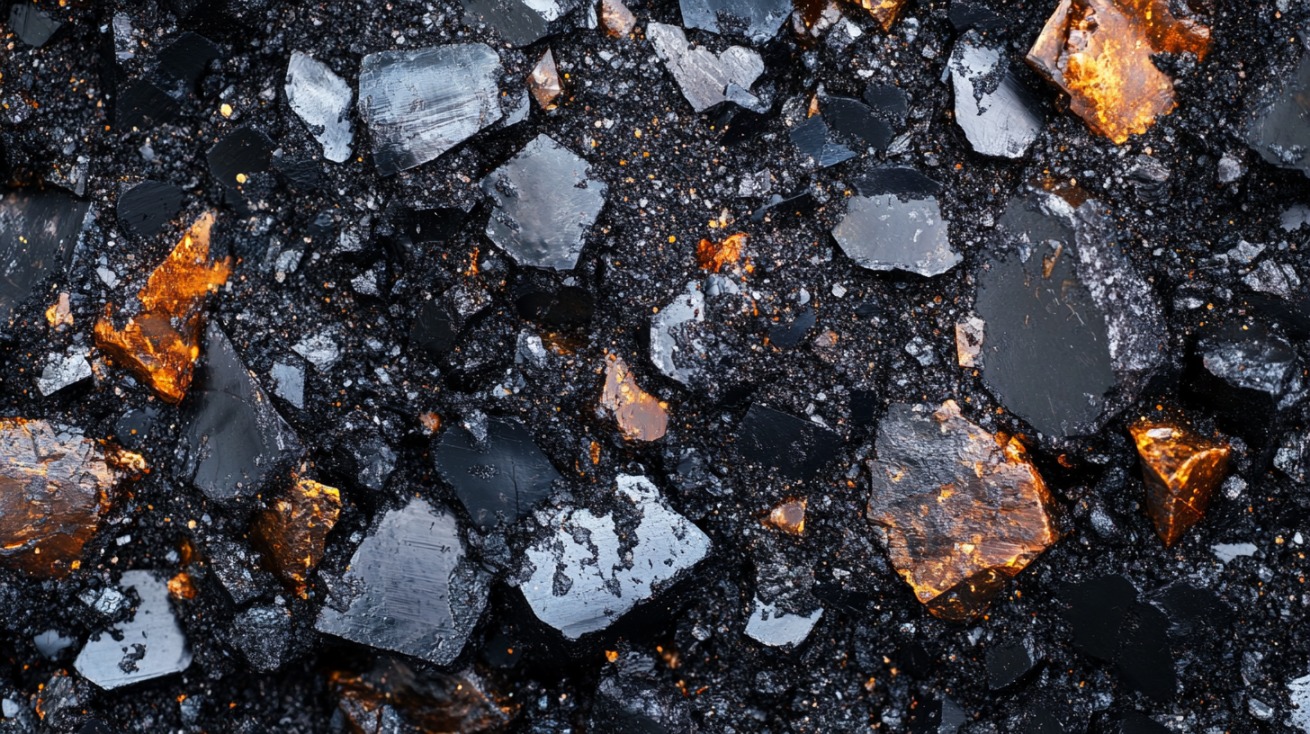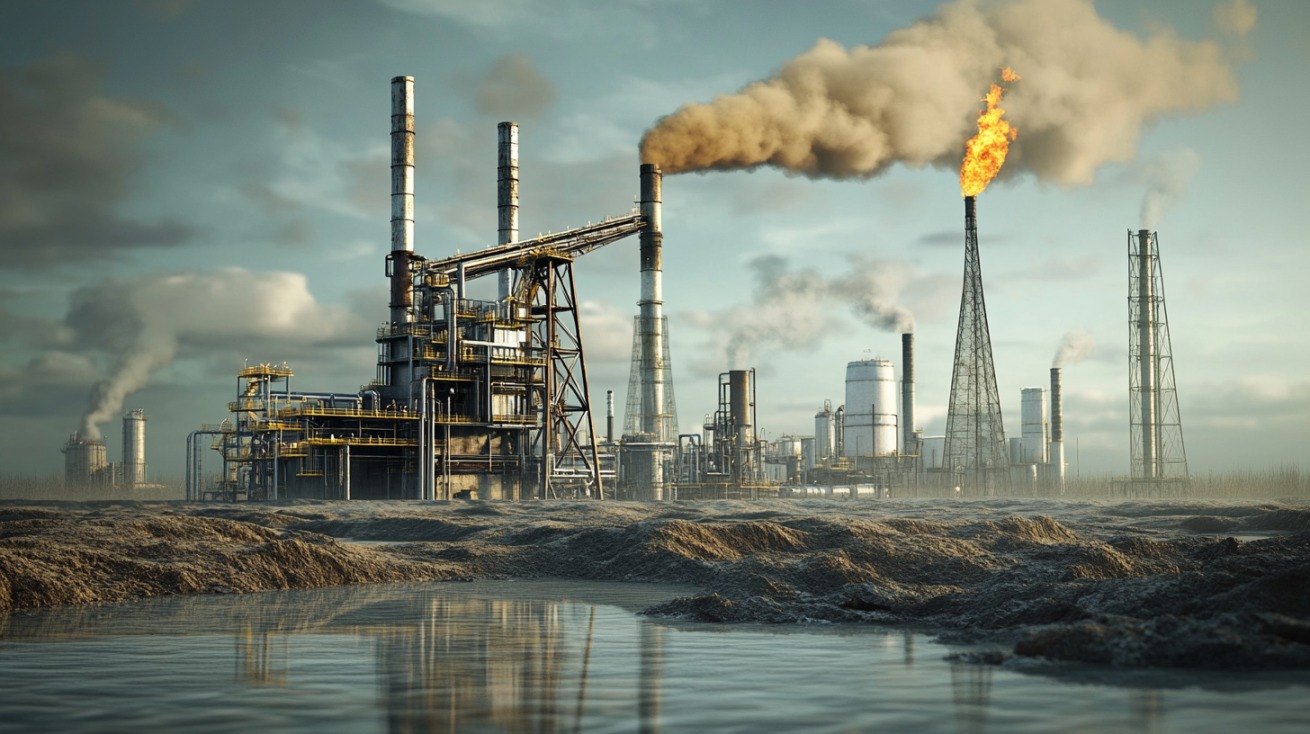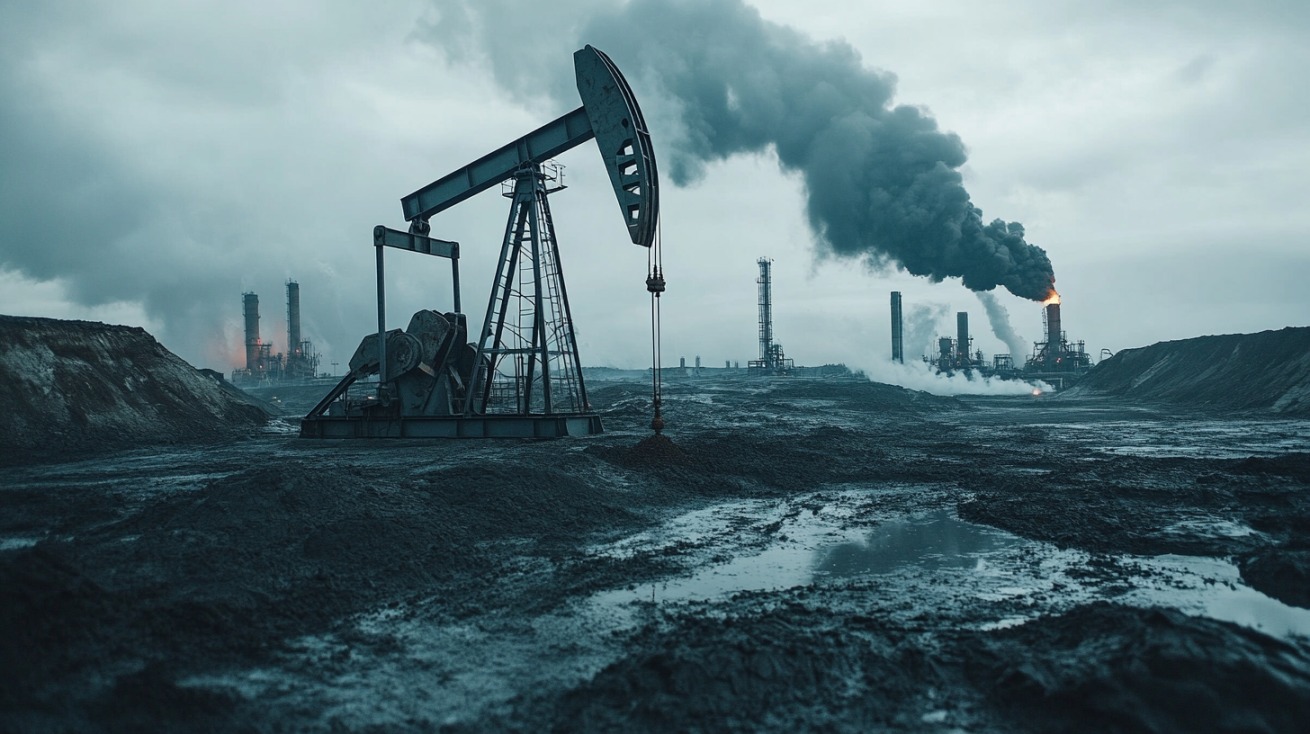Fossil fuels are organic substances derived from ancient plant and animal matter compressed under Earth’s surface.
These fuels include coal, petroleum (oil), and natural gas—each vital to daily life. Electricity, transportation, and industrial operations depend heavily on them.
Created over millions of years, fossil fuels are used far faster than they can be replenished. Their finite nature raises concerns about sustainability and energy planning.
The Common Origin – Organic Matter and Geological Time
Fossil fuels share a common origin rooted in the decay of biological material over immense periods. Their formation starts with organic matter—plants, animals, and microscopic organisms—that once thrived on land or in oceans. When these life forms died, their remains became buried under sediment.
The environmental conditions surrounding this burial played a crucial role in preserving their energy potential.
Large quantities of plant debris accumulated in ancient swampy regions, eventually becoming the foundation for coal. In contrast, oil and natural gas trace their origin to microscopic marine organisms such as plankton, which sank to the seabed upon death.
Lack of oxygen in these environments prevented complete decomposition, allowing carbon, the energy-storing element in organic matter, to be retained rather than released.
Over millions of years, heat, pressure, and microbial processes transformed the buried remains into hydrocarbons that power modern civilization.
To better grasp this process, consider the following bullet points that break down key steps and conditions:
| Stage | Source Material | Process Description | Outcome |
|---|---|---|---|
| Initial Organic Matter | Plant debris in swamp forests | Accumulated plant matter begins to compact under surface conditions | Leads to coal formation |
| Sedimentation Process | Organic layers covered by mud, clay, sand | Continuous buildup of sediment increases weight on underlying materials | Causes rise in pressure and temperature |
| Anaerobic Environment | Oxygen-deprived conditions | Aerobic bacteria cannot fully decompose organic matter | Carbon content is chemically preserved |
| Transformation Over Time | Organic matter (peat, kerogen) | Microbial activity and geothermal heat act over millions of years | Conversion to coal, crude oil, and methane |
| Storage in Rock Layers | Fossil fuels formed in subsurface zones | Trapped in porous rock structures beneath the Earth’s surface | Prevented from escape by impermeable rock layers |
Formation Processes of Specific Fossil Fuels

Fossil fuels form through complex, time-consuming processes involving organic material, pressure, heat, and specific geological conditions.
Each type of fossil fuel, coal, oil, and natural gas, follows a distinct developmental path shaped by the original biological source and the surrounding environment.
To break down these processes further, key transformation stages and chemical changes can be organized into helpful bullet points.
Coal Formation
Coal began as dense vegetation in vast, swamp-filled regions that existed hundreds of millions of years ago. When plants died, their remains accumulated in wet, oxygen-poor environments, forming thick, spongy layers of peat.
With time, sedimentation added weight, which compressed the peat and increased underground temperature levels.
- Peat: Partially decayed plant material, rich in moisture and low in carbon.
- Lignite: Often called brown coal; contains more carbon than peat but still holds a high moisture content.
- Bituminous Coal: More compressed and drier; widely used in power generation and industry.
- Anthracite: The hardest coal form with the highest carbon content and energy output.
Each transformation required long exposure to increased pressure and moderate heat. Coal deposits often lie in regions where swamps once dominated, including parts of the United States, China, India, and Russia.
Oil Formation
Oil traces its origins to tiny marine organisms such as plankton. After these organisms perished, their remains sank to the bottom of oceans and seas, mixing with sediment. Over time, layers of silt and mud buried this organic material under enormous weight.
- Sediment Accumulation: Dead plankton became embedded in silt at ocean bottoms.
- Kerogen Formation: With pressure and limited oxygen, the material became a waxy intermediate substance called kerogen.
- Crude Oil Generation: Additional heat transformed kerogen into liquid hydrocarbons, forming crude oil.
Once formed, the oil didn’t stay in place. It moved slowly upward through porous rock formations. Its migration halted when it hit dense, impermeable rock layers. These barriers created reservoirs—oil traps—which could be tapped through drilling.
- Starts with plankton remains buried under sediment.
- Converts to kerogen through moderate heat and pressure.
- Transforms into crude oil under increased thermal conditions.
- Moves upward through porous rock.
- Trapped by impermeable rock layers.
Drilling for oil occurs both on land and offshore, depending on where ancient marine ecosystems once flourished.
Natural Gas Formation
Natural gas often accompanies oil, forming either alongside it or as a result of further decomposition under higher temperatures. Heat levels that go slightly beyond those required for oil formation are key to producing gas. Chemical reactions break kerogen or crude oil molecules into simpler forms.
Methane—a simple hydrocarbon with one carbon and four hydrogen atoms—emerges as the most abundant component. Its physical characteristics cause it to rise through rock layers even more readily than oil.
- Deeper burial of organic material.
- Greater heat and pressure breaking down kerogen or oil.
- Methane and other light gases forming.
- Accumulation of gas above oil deposits or in isolated reservoirs.
In some cases, natural gas forms independently in deeper geologic zones where extreme temperatures prevent liquid oil from forming.
Access to natural gas today depends on drilling, with horizontal drilling and hydraulic fracturing unlocking sources previously considered unreachable.
Chemical Composition of Fossil Fuels

Chemical structure plays a critical role in how fossil fuels function as energy sources. Composed primarily of hydrocarbons—molecules formed by carbon and hydrogen—fossil fuels store energy that can be released during combustion.
Crude oil, often referred to as petroleum, consists of thousands of hydrocarbons ranging in molecular size and complexity. These vary based on geological factors such as source depth and region of formation.
The specific composition determines how the oil is refined and which products are extracted, such as gasoline, diesel, or jet fuel.
Natural gas contains fewer compounds, with methane making up the bulk of its composition. Coal differs significantly, with high carbon concentration and a mix of additional elements.
Composition fluctuates depending on type and origin, but it usually contains non-combustible materials that affect its efficiency and emissions.
Key components of each fuel type include:
Crude Oil:
- Thousands of hydrocarbons such as alkanes, cycloalkanes, and aromatic compounds
- Varies based on geological location
- Often includes sulfur, nitrogen, and trace metals
Natural Gas:
- Primarily methane (CH₄)
- It may contain ethane, propane, butane, carbon dioxide, hydrogen sulfide
Coal:
- High carbon content
- Contains moisture, sulfur, nitrogen, and ash
- Energy yield depends on coal grade (e.g., lignite vs. anthracite)
These chemical traits influence combustion efficiency, pollutant release, and potential for environmental harm during extraction, transport, and use.
Timescale and Irreproducibility

Fossil fuel formation is governed by geological time rather than human schedules. Millions of years are required to convert organic material into usable fuels.
The transformation demands precise combinations of heat, pressure, and absence of oxygen—conditions only found naturally under Earth’s surface over extended periods.
Efforts to artificially recreate fossil fuel formation have not led to scalable results. No known technology can compress time, temperature, and pressure in a way that mimics natural processes to yield the same energy density and quality.
A clear look at the factors involved in formation highlights their complexity:
Timeframe:
- Typically spans 10 million to hundreds of millions of years
- Peat can take thousands of years to form; coal and oil require vastly more time
Environmental Requirements:
- Anaerobic (low oxygen) conditions to prevent full decomposition
- High geological pressure from sediment layers
- Sustained heat deep within Earth’s crust
Irreproducibility:
- No method exists to duplicate these processes within practical or economical limits
- Non-renewable classification stems directly from this limitation
Rapid consumption in contrast to slow formation rates poses a major concern. Fuel reserves built over eons are depleted in decades, creating an imbalance with lasting environmental and economic effects.
Geographic Distribution and Accessibility

Fossil fuel reserves are not evenly spread across the planet. Geological history, ancient climate zones, and tectonic shifts determined where organic matter settled and how it transformed into energy-rich materials.
Some regions gained vast reserves due to favorable conditions, while others have little to no accessible fossil fuel stores.
Global reliance on fossil fuels creates dependencies on a limited number of resource-rich areas. As reserves become harder to access, technology and geopolitical strategies evolve to manage extraction and control supply.
Regions with major fossil fuel reserves include:
| Fossil Fuel Type | Countries/Regions | Notable Locations |
|---|---|---|
| Middle East | Saudi Arabia, Iran, Iraq | |
| United States | Texas, Alaska, Gulf of Mexico | |
| Russia | Various national reserves | |
| Coal | United States | Appalachian region, IllinOilois Basin |
| China | Shaanxi, Inner Mongolia | |
| India | Jharkhand, Odisha | |
| Russia | Siberia | |
| Natural Gas | Russia | Yamal Peninsula, Sakhalin |
| Iran | South Pars field | |
| United States | Marcellus and Permian Basins |
Techniques for accessing these resources continue to evolve.
- Drilling: Used for both oil and gas, requires advanced rigs and support systems
- Surface mining: Applied to coal seams near Earth’s surface, especially in the U.S. and Australia
- Fracking (Hydraulic Fracturing): Releases trapped oil and gas from shale formations, common in North America
Environmental impact, geopolitical tensions, and economic costs shape decisions about where and how these fuels are obtained. As easily reachable reserves decline, extraction shifts to deeper, more complex, and often riskier locations.
The Bottom Line
Fossil fuels formed under extremely rare conditions tied to biological, chemical, and geological forces acting together across millennia.
Their usefulness as energy sources is undeniable, yet their limited supply raises long-term challenges. Studying their formation provides essential context for energy consumption and future planning.
As society seeks alternatives, appreciating the origin and nature of fossil fuels helps shape informed decisions.

